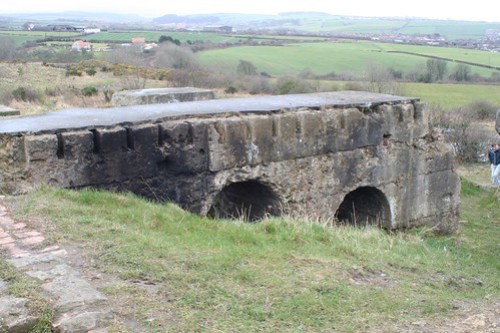The easiest way to avoid a plummet down the cliffs is to approach from Boulby and continue straight on where the Cleveland Way turns sharply uphill.
The first remains to be encountered are the foundations of a reservoir, theres also a large metal tub, although I cannot say if its contemporary.
 Â
 

Adjacent to this is a small length of tunnel which has collapsed a short way in.
 Â
 

All over the site are numerous smaller conduits that must have been used to move liquids around.
 Â
 

The path then passes directly between the bases of two circular cisterns.

Up towards the base of the cliffs the top of a short waterlogged tunnel can be seen to the right of a retaining wall, this only travels through the bank and appears to be for drainage.
 Â
 

The next area you come across is the series of huge stone retaining walls visible from the top of the cliffs on the Cleveland Way.
 Â
 



Huge boulders from the cliffs litter the area above the works.

Two small tunnels can be seem running through the remains of the alum clamps where the stone was burnt for months on end, it has been suggested they were to aid the process.
 Â
 

Towards the edge of the cliff a tunnel runs around an area of an old landslip re-emerging some distance away, The regular blocks suggest some sort of trough or conduit was originally present.
 Â
 

A smaller conduit joins the tunnel at one point, and somewhat mysteriously a pretty teapot sits in one corner.
 Â
 
 Show on map
Show on map





































































































